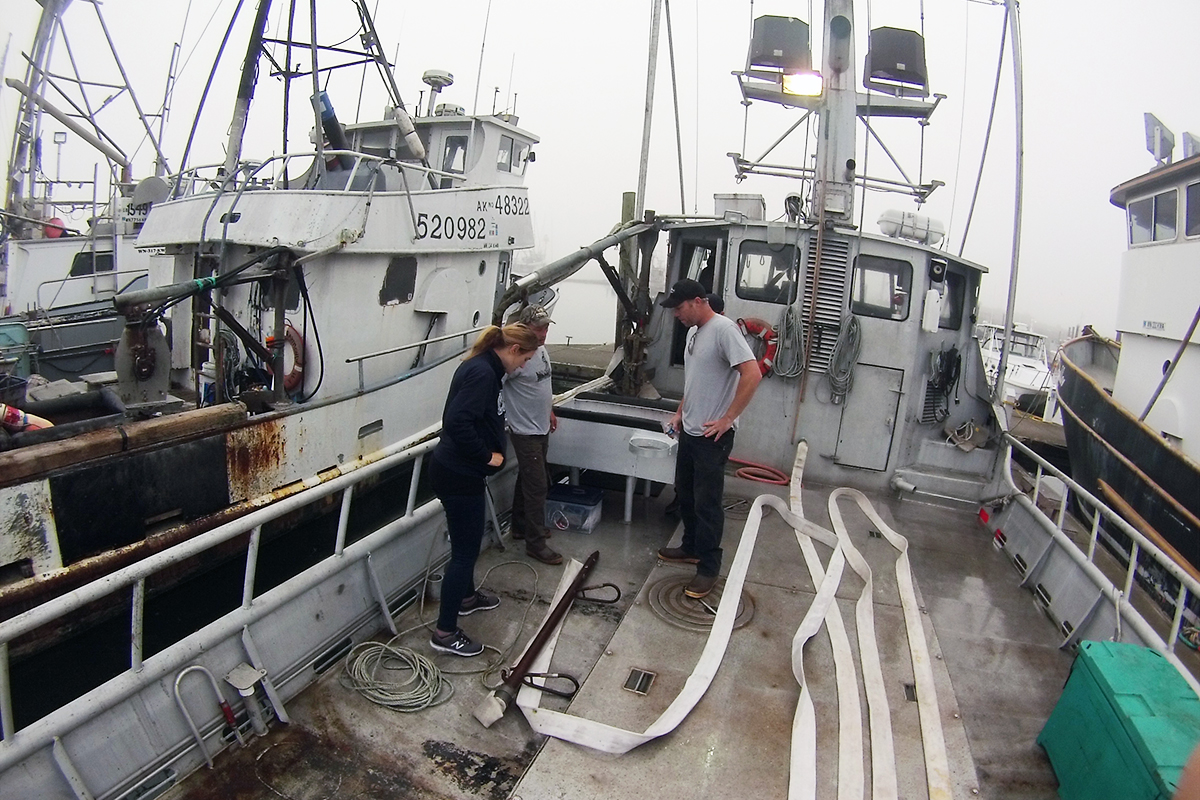In a migration of a different sort, Puget Sound leaders make an annual trek to Washington, DC to speak up for our favorite estuary with Congress.
We're Puget Sound's Voice in the Halls of Congress
Our Salmon Are Choking on Toxicants — What's the Solution?
Showcasing the Importance of NOAA Funding for Salmon Restoration
A Better Way to Meet Washington’s Needs: Invest in Nature
Eelgrass, home for sea life, is holding its own in Puget Sound
Some news from the bottom of Puget Sound: The total area of eelgrass beds hasn't changed much in the past 40 years. When other habitat areas have declined, this is encouraging — especially considering the number of aquatic species that use eelgrass beds, from young salmon to crabs. Eelgrass beds are common in tidal zones and along shorelines.
“Eelgrass meadows can grow so thick that when you’re swimming through them, you can’t see anything else,” said co-author Tessa Francis, of the Puget Sound Institute at UW Tacoma, in an interview with The Seattle Times. Watch the video for a diver's-eye view of eelgrass beds off the south coast of Whidbey Island. (Video courtesy of Ole Shelton, NOAA).
The report, co-authored by our lead scientist Phil Levin, was published in the Journal of Ecology. Another promising find was that significant changes in eelgrass beds occurred on a very small scale — meaning local action may likely lead to positive results.
"Our human population has exploded, we have all kinds of increasing impacts on Puget Sound, and yet eelgrass is resilient," said Phil. "It gives us hope about the ability to restore eelgrass. It tells us that what we do at the neighborhood scale matters, and we can have a positive impact."
Phil added that one of the largest increases in eelgrass is near our Port Susan Bay Estuary Restoration Project. The Stillaguamish River spills into the bay, mixing freshwater and saltwater to create extensive estuarine marshes that produce a vast quantity of decaying organic matter, helping the offshore habitat.
The data that have been collected and used in this analysis are incomplete and several of the findings beg further research — such as how adjacent areas have very different trends and nearby population density doesn't seem to have a strong correlation with negative impacts on eelgrass beds.
Read The Seattle Times' Article
About the Analysis
Fir Island: Collaborative Restoration for Salmon, Wildlife and People
Big habitat gains were celebrated at the June 30th groundbreaking for a restoration project at the Fir Island Farms Unit of the Skagit Wildlife Area.
Written by Cailin Mackenzie, GLOBE Intern
Photographs by Jason Wettstein, Washingon Dept. of Fish and Wildlife
“This kind of project takes real collaboration,” said Bob Everett, from Washington Department of Fish and Wildlife (WDFW), and this collaboration will provide exponential benefits to the five native salmon species that call Skagit delta home.
This $16.4 million project, led by WDFW, will restore 131 acres of tidal marsh habitat and set back 5800 feet of existing dike, moving about 10,000 truckloads of dirt along the way. The restoration will provide enduring benefit not only for salmon recovery, but also for agriculture and communities.
Jessie Israel, The Nature Conservancy’s Director of Puget Sound Conservation pictured fourth from the right, lauds the project team’s partnership on large-scale restoration with lasting environmental impact. “That’s the only way we’re really going to get things done.”
The large scale of this project would not have been possible without broad and synergetic collaboration. The Nature Conservancy worked with WDFW, National Oceanic and Atmospheric Administration, Puget Sound Partnership, U.S. Fish and Wildlife Service, and Estuary and Salmon Restoration Program, along with other invaluable partners, to simultaneously restore habitat for migrating juvenile Chinook, protect against saltwater intrusion to farmland, and ensure public access for bird watching.
The Fir Island project closely aligns with The Nature Conservancy’s conservation strategies – we are committed to fruitful teamwork that secures victories for humans, animals, and nature alike.





































